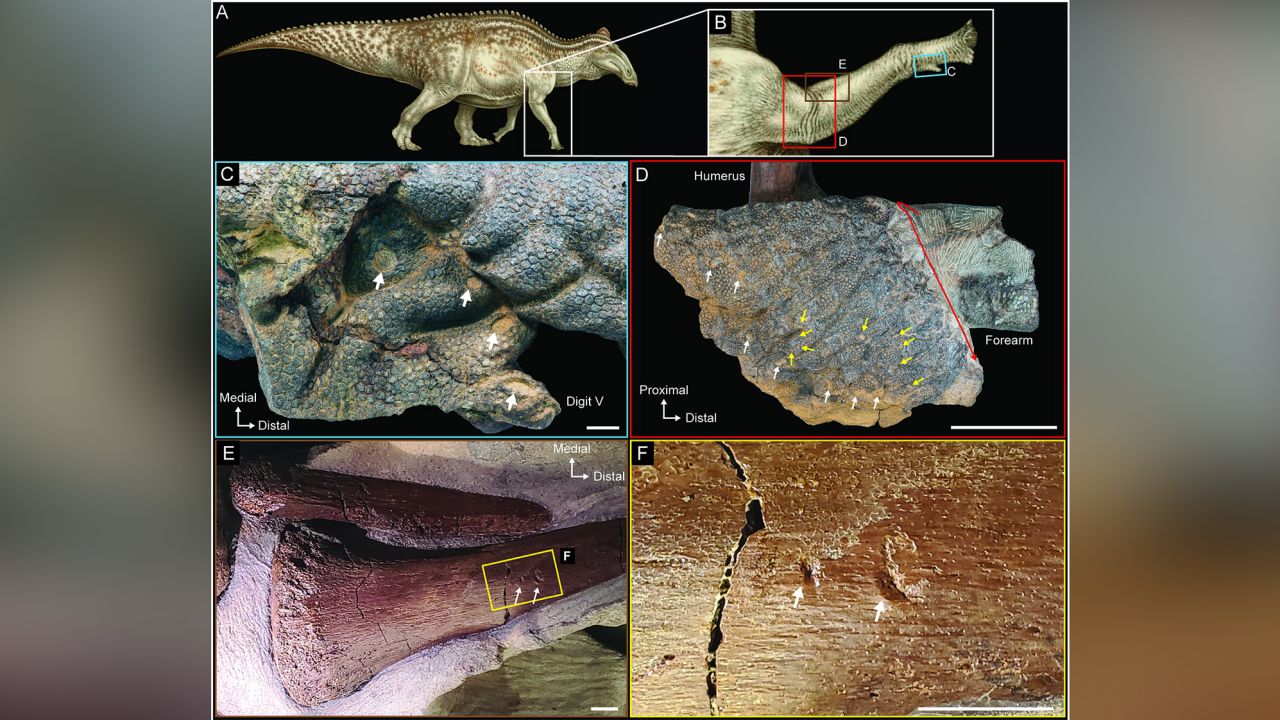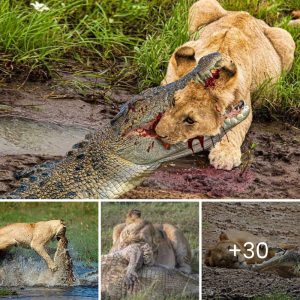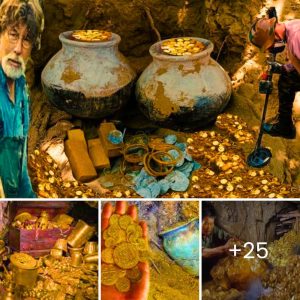
The skin of a 67-million-year-old dinosaur has revealed bites and gashes from an ancient crocodile, and how its flesh was ripped apart may explain why it became mummified.
Skin decays much more easily than bone so it’s extremely rare to find fossilized dinosaur skin.

New research on a 7-meter (23-foot) long Edmontosaurus, a type of plant-eating hadrosaur, found near the town of Marmarth, North Dakota, in 1999 has shed light on what factors allowed the skin to survive through the eons.
“The bite marks were really unexpected. It had been thought that soft tissue wouldn’t preserve if it was damaged prior to burial, so the carnivore damage is what really started us thinking about how these fossils form in the first place,” said Stephanie Drumheller-Horton, a paleontologist at the The University of Tennessee’s department of Earth and planetary sciences, a coauthor of the new study.

Paleontologists used to think that a dinosaur, or any prehistoric creature, needed to be buried extremely rapidly for soft tissue to be preserved – but this was not the case for this poor hadrosaur.
The researchers think bite marks on the hadrosaur’s arm came from an ancient relative of a crocodile, but they’re not sure what kind of animal clawed or gnashed its tail – although it was likely bigger. It’s not clear whether the injuries to its arm and tail killed it or whether they were inflicted by scavengers after its death.
However, it was the dinosaur’s misfortune that allowed its skin to preserve, Drumheller-Horton explained.

“To try to put it in the least disgusting way possible – puncturing the skin allowed the gases and liquids associated with later decomposition to escape. That left the hollowed out skin behind to dry out. Naturally mummified skin like this can last for weeks to months in even fairly wet environments, and the longer it lasts, the more likely it is to be buried and undergo fossilization,” she said.

The bluish color of the fossilized skin isn’t thought to reflect what it would have been when the dinosaur was alive. However, a high iron content in the rocks during the fossilization process may have affected it.
While often depicted as greenish gray, what color most dinosaurs were is largely unknown. Studies on fossilized dinosaur feathers have revealed that some were surprisingly colorful.

The hadrosaur’s skin, however, has provided a lot of information about the size and patterns of scales across the dinosaur’s body as well as the amount of muscle mass – based on how expansive the skin is in that area.
“Skin decomposes much more easily than bones, so it takes different and less commonly observed processes to preserve the skin long enough to be buried and fossilized,” said research coauthor Clint Boyd, a senior paleontologist at the North Dakota Geological Survey.

He said that there were perhaps fewer than 20 true dinosaur “mummies,” with complete to nearly complete sets of remains with soft tissue.
“To put it in context I have found thousands of fossils in my career, but only one of those preserved skin impressions (an imprint of the skin, not the actual preserved skin itself) and I’ve never found one myself that had the skin preserved,” Boyd said via email.






